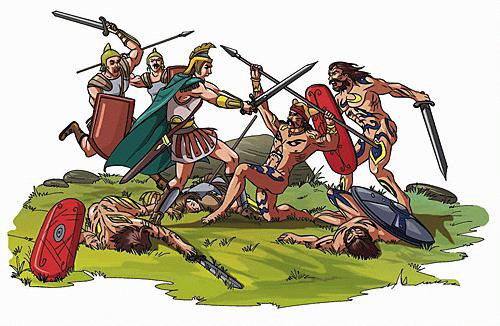
Celtic mythology is one of the mostinteresting directions of folk art all over the world. One day - and more precisely, in the 17th century - Evard Lloyd (linguist) observed that certain features of the languages spoken by the inhabitants of Brittany, Scotland, Ireland, Wales and Cornwall have similar features. And then he called all these peoples Celts, thus denoting a certain cultural similarity between them. Let's find out more about them.

The Celts. History of peoples
In general, the very word "Celts" was mentionedancient Greeks, when they described some people leading, if I may say so, a closed way of life. If to translate into Russian, then this term means "secretive". In what way did such a feature appear? For example, the fact that the Celtic legends were passed only from mouth to mouth: there are no written sources with the legends of the ancient period.
The history of the people has already been around 32 centuries. The first places of their settlements were in Central Europe, to be exact - in France and Germany, some parts of the Danube river basin, and also in the Alps. They were engaged in agriculture, they were able to get iron. Soon the migration of the Celts began. A small part of them now was in the territories of Spain, Portugal, Greece. However, the bulk of the Celts concentrated on the territory of the modern United Kingdom. However, after the invasion of the Romans, this civilization was almost completely destroyed (the exception is the Irish lands).
Celtic Mythology and Beliefs
Legends of King Arthur - perhaps the mostknown, that has reached our days. They describe the history of the British Isles. Celtic mythology consists of separate blocks: Brittish, Welsh, Breton and Scottish.
It is known that the Celts had several maingods - each of them was the patron of a certain people. The Aramists have Aramo, Allobrogs have Allobroks and so on. In this case, there were parallels with Roman mythology: after the romanization of the Celts, the pantheons of two cultures merged. Let us highlight some deities in Celtic mythology:

As mentioned earlier, these peoples do notrecorded neither their tales, nor traditions, nor religious views. That's why Celtic mythology is so ambiguous: many of the beliefs have reached us not in one, but in two or even three versions.

In general, even excavations and numerous studies are unlikely to ever give all answers to questions relating to Celtic mythology.
</ p>